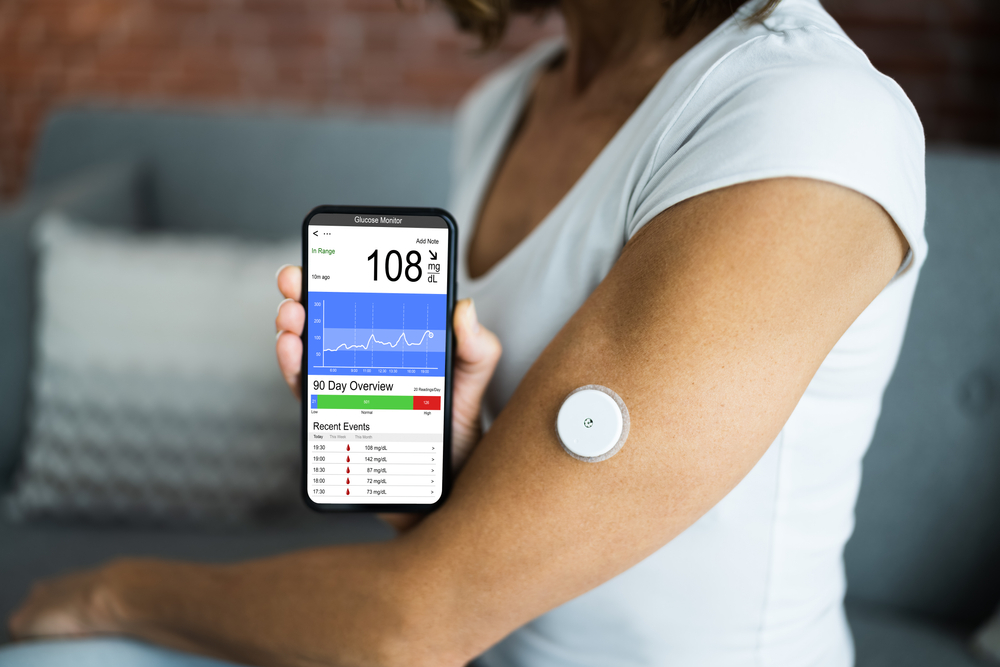Managing diabetes has always involved a delicate balance between monitoring blood sugar levels, managing diet, and using medication. However, the advent of Continuous Glucose Monitors (CGMs) has transformed the landscape of diabetes care, offering more effective and convenient ways for patients to track and manage their blood sugar levels. With millions of people worldwide affected by diabetes, CGMs are making a substantial impact on improving health outcomes and quality of life. This blog will explore what CGMs are, how they work, and why they are becoming a cornerstone of diabetes management, with research-backed insights.
What Are Continuous Glucose Monitors (CGMs)?

A CGM is a small, wearable device that measures glucose levels in real-time throughout the day and night. Unlike traditional finger-prick blood glucose meters, which provide a single glucose reading at the time of testing, CGMs offer a continuous stream of glucose data. This data is sent to a receiver or smartphone, where users can view their glucose trends and get alerts if their levels rise or fall outside of target ranges.
The device typically consists of three parts:
- A sensor inserted just under the skin, usually on the abdomen or arm, which measures glucose levels in the interstitial fluid.
- A transmitter attached to the sensor, which sends glucose data wirelessly to a receiver or smartphone.
- A display device (often a smartphone or wearable) where users can monitor their glucose levels and trends.
How CGMs Work
CGMs work by continuously measuring glucose levels in the interstitial fluid, which surrounds the body’s cells. While this is not the same as blood glucose, studies have shown that interstitial glucose levels closely correlate with blood glucose, making CGMs highly reliable for diabetes management.
The device automatically records glucose levels every few minutes, providing up to 288 glucose readings per day. This wealth of data gives users and healthcare providers a much more detailed view of blood sugar patterns, making it easier to adjust treatment plans, such as insulin dosages, diet, or physical activity.
Moreover, CGMs can alert users to potentially dangerous blood sugar levels before they feel symptoms. For example, the device can sound an alarm if glucose levels are trending too low (hypoglycemia) or too high (hyperglycemia), allowing for timely interventions.
Benefits of CGMs for Diabetes Management
1. Better Glycemic Control
One of the most significant benefits of CGMs is the improvement in glycemic control. Studies suggest that CGM users experience lower HbA1c levels—a long-term marker of blood glucose control—compared to those who rely solely on traditional glucose monitoring methods. A study published in the Journal of the American Medical Association (JAMA) found that people with type 1 diabetes who used CGMs had an average HbA1c reduction of 0.4% after just 6 months, a significant improvement in diabetes management.
In addition to lowering average blood glucose levels, CGMs reduce time spent in hypoglycemia. Hypoglycemia can be life-threatening, especially for people on insulin therapy. By providing real-time glucose alerts, CGMs can help users avoid dangerous lows, improving both safety and quality of life.
2. Data-Driven Insights
CGMs offer a deep dive into glucose data that cannot be matched by traditional finger-prick tests. The continuous nature of CGM readings allows users to identify patterns in their glucose levels, such as how their body reacts to certain foods, exercises, or stress. This enables them to make data-driven decisions about insulin dosing, meal timing, and other factors that influence blood sugar control.
A 2021 study published in Diabetes Technology & Therapeutics showed that CGM users had significantly fewer blood sugar excursions outside their target range compared to those using finger-stick monitoring, highlighting the effectiveness of CGMs in helping users maintain tighter glucose control.
3. Improved Quality of Life
The constant monitoring of glucose levels, combined with alerts for extreme highs and lows, gives people with diabetes peace of mind. Instead of frequently pricking their fingers, patients can focus on living their lives while still keeping a close watch on their glucose levels. In a survey by Diabetes Care, 74% of CGM users reported increased satisfaction with their diabetes management due to the reduced need for frequent finger sticks and the convenience of real-time monitoring.
Moreover, CGMs are particularly useful for overnight monitoring. Since blood glucose levels can fluctuate while sleeping, CGMs can alert users or their caregivers to dangerous drops in glucose, allowing for immediate corrective action.
4. Support for Insulin Therapy
CGMs are especially valuable for people with type 1 diabetes or those with type 2 diabetes who require insulin therapy. For those on intensive insulin regimens, CGMs provide critical data to adjust insulin doses based on real-time needs. Some advanced CGMs can even pair with insulin pumps to automatically adjust insulin delivery in response to changing glucose levels, a technology known as closed-loop systems or artificial pancreas systems.
Challenges and Limitations
While CGMs offer numerous advantages, there are still some challenges:
- Cost: One of the primary barriers to widespread CGM adoption is cost. CGM systems can be expensive, and not all insurance plans cover them fully. However, coverage has been improving as the benefits of CGMs become more widely recognized.
- Accuracy Variations: While CGMs are generally accurate, they may occasionally lag behind blood glucose levels, especially during rapid changes. This can result in slight differences between CGM readings and finger-prick glucose readings. Regular calibration may be required for some models to ensure accuracy.
- Learning Curve: New users may need time to adapt to using CGMs, learning how to interpret the data and make appropriate decisions. Healthcare providers play a key role in helping patients understand how to best use CGMs for optimal results.
The Future of CGMs
The future of continuous glucose monitoring looks promising as technology continues to advance. Next-generation CGMs aim to improve accuracy, reduce the need for calibration, and extend sensor wear time. Companies are also exploring the use of non-invasive glucose monitoring, which would eliminate the need for sensors inserted under the skin.
Additionally, AI-powered predictive alerts may soon provide even more sophisticated real-time insights, predicting glucose trends hours in advance and suggesting personalized interventions.
Conclusion
CGMs have revolutionized diabetes management by providing continuous, real-time data that empowers users to take control of their glucose levels with more precision and confidence than ever before. With proven benefits such as improved glycemic control, enhanced safety, and better quality of life, CGMs are a game-changer for many people living with diabetes. While there are challenges, such as cost and learning curve, the research overwhelmingly supports the value of CGMs as a critical tool in modern diabetes care.
For anyone managing diabetes, CGMs offer the potential to live more freely and safely, making it easier to navigate the complexities of blood sugar control. As the technology continues to evolve, CGMs are likely to become even more accessible and user-friendly, further improving the lives of millions of people around the world.
References:
- Battelino, T., et al. (2019). Continuous Glucose Monitoring in Diabetes: A Position Statement by the American Diabetes Association. Diabetes Care.
- Beck, R. W., et al. (2017). Effect of Continuous Glucose Monitoring on Glycemic Control in Adults With Type 1 Diabetes Using Insulin Injections: The DIAMOND Randomized Clinical Trial. JAMA.
- Wong, J. C., et al. (2021). Real-World Usage of Continuous Glucose Monitoring in Patients With Type 1 Diabetes: A Study of CGM Data Over a 3-Month Period. Diabetes Technology & Therapeutics.
